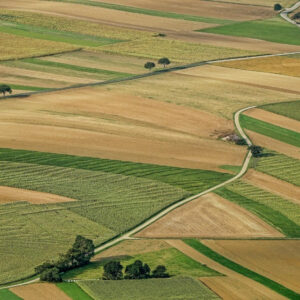South Africa’s agriculture sector, which creates around 874,000 jobs and is a vital contributor to the country’s economy, spends approximately R137 billion on electricity to produce ~80% of the nation’s food, according to figures released by AgriSA. But insufficient and unreliable electricity supply, as well as increasingly dilapidated grid infrastructure plagued by cable theft, lack of maintenance, and delays in the approval of on-site generation installations are crippling the industry, resulting in the sector losing more than R23 billion in the period between January and September 2022 alone.


“Where farmers suffer, the nation suffers,” says Roger Hislop, Energy Management Systems Executive at CBI :energy. “Reliable electricity is the bedrock of modern farming – pumping water, processing crops, heating, and cooling. A long power outage can mean harvests are ruined, and the death of livestock. Energy security is critical. At the same time, spiralling costs on already thin margins are posing an existential threat to the sector.”
“Energy security is an existential crisis for the sector in the long term, and rising energy costs are a hammer blow to farm viability in the short term. There has to be a new way of looking at energy – it can no longer be vasbyt en hoes elke maand (hang on and cough up every month),” he notes.
How tech can reduce energy spend
Hislop explains that with electricity demand in the sector expected to double by 2030, it is essential for those in the agriculture industry to have oversight of how electricity is consumed, and get it under control. If you are not able to see what is being consumed when, how and by whom, it means there is no way you can reduce energy usage and costs.”
Large agri-businesses are concerned and starting to investigate Demand Side (Energy) Management (DSM). One such company, which operates a number of farms around Southern Africa, is running trials of managed smart metering and automated load management technologies to give the business better control over where and how resources such as electricity, labour and capital are dispensed.
The organisation (which is not yet talking publicly about its trials) spends well over R100 million per year on electricity. It is aiming to save significant costs by shifting loads from peak tariff to off-peak times, and prioritising which loads are on when. “Simple energy cost savings are the priority, but improved automation is a side benefit,” points out Hislop. “The automation of loads eliminates the need for employees to travel to far-flung points around the farm to manually switch motors or pumps on and off. They can be much more efficient in how they allocate their resources and reduce time wastage.”
Sweating the solar
As electricity prices soar and loadshedding continues, farm managers are employing alternative energy supplies such as backup generators to reduce disruption; and as costs and payback improves, installing solar generation and batteries.
“Many have elected to power their farms using solar PV and are looking at ‘green energy’ procurement from the utility solar operators (PPAs) slowly coming into play. Currently, 10% of all renewable energy installations are in the agriculture sector, and this is predicted to grow at 10% annually, but again loads must be managed since these systems only have so much capacity,” shares Hislop. “Automated intelligent load control assists during loadshedding by turning off non-essential loads. This ensures that energy from battery storage is managed correctly, and that the strain of peak loads on inverters and backup diesel generators is reduced.”
He adds that planning around renewables requires lots of good, granular data, which is a hugely valuable spinoff benefit of managed metering systems and automated load control systems – all the data is collected, analysed and presented back to help farm operators make good business decisions.”
“The days of good old Mother Eskom with vast amounts of low-cost energy are over for good,” says Mike Barker, Energy Engineer at EnergyFlexibility. “Granular consumption and generation data is exactly what it’s all about now. Electricity is very expensive, so farmers need to monitor its use at many points in their business, and in real time (at least hourly, preferably per minute to allow ‘real life’ events to be correlated with consumption information.”
Barker believes that farmers need to tackle excess use and possible waste on a day-to-day, even on an hour-to-hour basis – not at the end of the month when the Eskom bill arrives. “Modern energy management systems allow farmers to define sets of rules that automatically manage their electrical usage in real time, and flags exceptions as they occur.”
“Now is the time for farmers to invest in technology to continue growing this crucial sector, to continue growing their operations, to continue growing jobs and to continue growing food for the country,” concludes Hislop.

